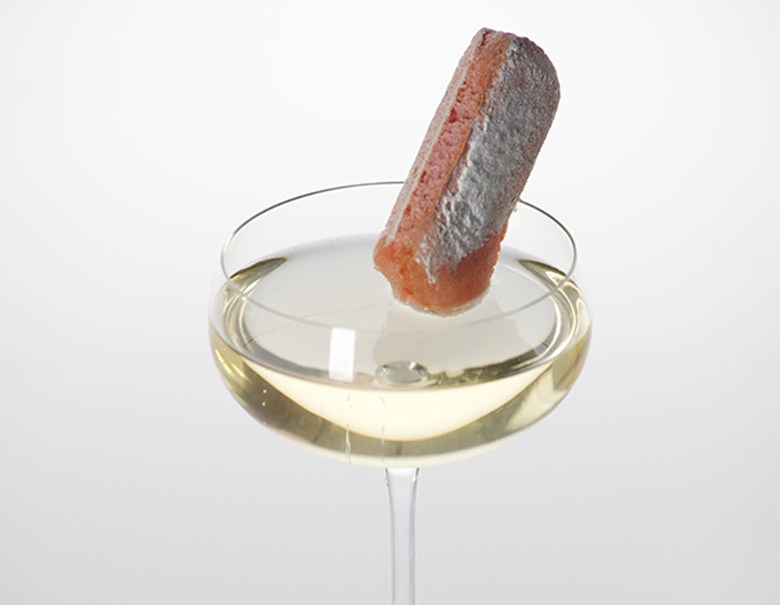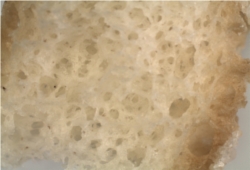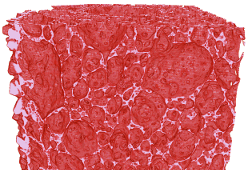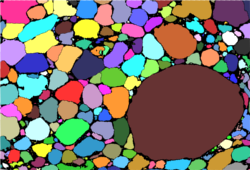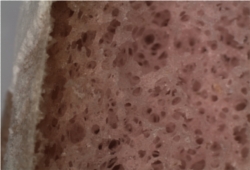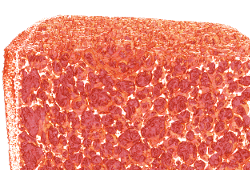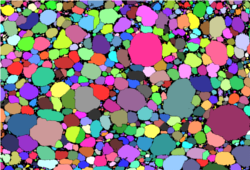Biscuits Roses de Reims have been dipped into champagne or wine since the 17th century. Of course it is essential that the biscuit does not break as soon as it has absorbed the liquid. What makes it different from usual sponge fingers which crumble immediately when wet? Is it the micro structure?
Visually, there are no differences, not even when examined under the microscope. For a quantitative analysis we imaged small samples spatially using tomography. At first glance, the sponge fingers seem to be more irregular than the Biscuits Roses. However, measuring global geometric characteristics did not yield significant differences.
In the sponge finger, the pores are slightly larger. However, contrary to what the slice view suggests, there are no monster pores. It's the structure model index (SMI) that finally hints into the right direction: The sponge finger with SMI -0.35 is rather a closed foam while the biscuit rose (SMI 0.7) is an open one.

